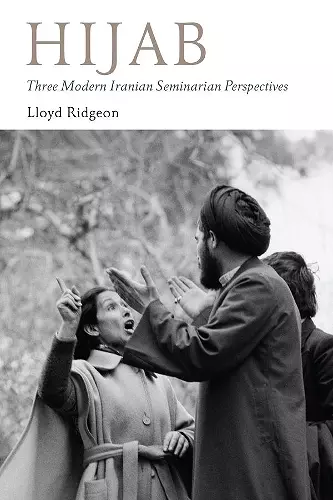Hijab - Three Modern Iranian Seminarian Perspectives
Format:Hardback
Publisher:GINGKO
Published:26th Apr '21
Should be back in stock very soon

This book provides an overview of the range of seminarian thinking in Iran on the controversial topic of the hijab. During the modern period, Iran has suffered a great deal of conflict and confusion caused by the impact of Western views on the hijab in the 19th century, Riza Shah Pahlavi's 1936 decree banning Islamic head coverings, and the imposition of the veil in the wake of the Islamic Revolution in 1979. Hijab addresses the differences of opinion among seminarians on the hijab in the Islamic Republic of Iran, focusing on three representative thinkers: Murtaza Mutahhari who held veiling to be compulsory, Ahmad Qabil who argued for the desirability of the hijab, and Muhsin Kadivar who considers it neither necessary nor desirable. In the first chapter, the views of these three scholars are contextualized within the framework known as 'new religious thinking' among the seminarians. Comprehending the hermeneutics of this new religious thinking is key to appreciating how and why the younger generation of scholars have offered divergent judgements about the hijab. Following the first chapter, the book is divided into three parallel sections, each devoted to one of the three seminarians. These present a chronological approach, and each scholar's position on the hijab is assessed with reference to historical specificity and their own general jurisprudential perspective. Extensive examples of the writings of the three scholars on the hijab are also provided.
‘This excellent study is an examination of the evolving theological and juristic positions on hijab among seminarians in Iran. The author Lloyd Ridgeon provides the reader with valuable insights into the complexity of the juristic debates. Focusing on the work of three aptly-chosen scholars, he makes their juristic arguments available in English for the first time, as well as referencing the extensive literature on the topic in English and Persian. The writing is clear, the story unfolds systematically and cogently, and the book is a pleasure to read.’ Ziba Mir-Hosseini, SOAS University of London; ‘This study fills an important gap by discussing the views of three different Islamic scholars from Iran on the hijab. A particular strength of the book is that it covers scholars from both the pre-revolutionary and post-revolutionary periods. The contributions of the scholars are contextualized by providing accessible introductions to the political, social and cultural developments in Iran before and after the Islamic Revolution with a focus on gender issues and the question of the hijab. As such, the study illustrates quite well how Islamic jurisprudence is always situated in and responds to a particular context.’Oliver Scharbrodt, University of Birmingham.
ISBN: 9781909942561
Dimensions: 234mm x 153mm x 2mm
Weight: unknown
400 pages